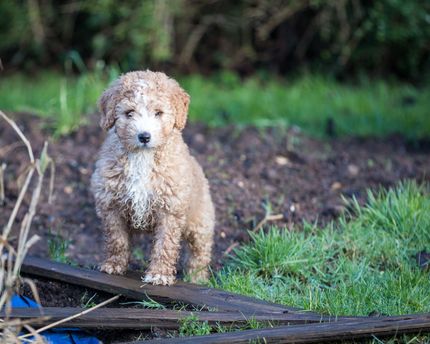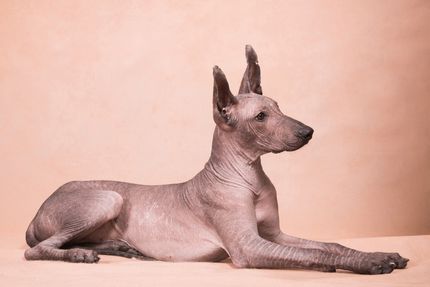Facts & Origin
Tibetan Pap (Tibetan Spaniel and Papillon mix)
The hybrid breed Tibetan Pap is created by crossing a Tibetan Spaniel and a Papillon. Both parent breeds have a long and interesting history. The Tibetan Spaniel has its roots in the monasteries of Tibet, where it was prized as a temple dog. The Papillon, also known as the Continental Dwarf Spaniel, has a history dating back to the 16th century and is closely associated with European nobility. The union of these two breeds creates the charming and loving Tibetan Pap.
Suitability and attitude
The Tibetan Pap is a versatile dog that adapts well to different lifestyles. He is ideal for families, couples, and individuals as long as he gets enough attention and interaction . His small size makes him a good choice for apartments and city homes, although he is happy in rural settings as well.
| Alternate Name | - |
| Origin | France - Tibet |
| Life expectancy | 12 - 16 years |
| Care requirements | low-maintenance - high-maintenance |
| Activity level | average to high - average |
| FCI group | not recognised |
| AKC group | not recognised |
| KC group | not recognised |
More Papillon mixes
More Tibetan spaniel mixes
Attitude, character and temperament of the breed
Possible Character Traits
With his parent breeds as a guide, the Tibetan Pap can be expected to exhibit a charming mix of temperaments. He is likely to be friendly, bright, and intelligent, with a lively and playful nature. His alertness, inherited from the Tibetan Spaniel, can also make him an excellent watchdog, while his Papillon side makes him a great companion and lap dog.
Overall, the Tibetan Pap is a wonderful mixed breed that combines the best traits of its parent breeds. With proper care and love, this charming and lovable companion is sure to bring many years of joy and companionship.
Character
Usage
Grooming and health
Grooming the Tibetan Papp includes brushing his coat regularly to keep it shiny and free of mats. An occasional bath is needed to keep him clean and fresh. The Tibetan Papp's health is usually good, but like all dogs, he is prone to certain ailments. These can include dental problems, eye disease, and patellar luxations. Regular vet visits and a balanced diet will help control these problems.
What does this mixed breed look like?
The body size of the Tibetan Pop is between the sizes of its parent breeds, usually reaching a shoulder height of 20 to 28 cm and weighing between 4 and 6 kilograms. His coat is medium to long in length and can have a variety of colors and patterns inherited from his parent breeds. The ears can have either the drooping ears of the Tibetan Spaniel or the butterfly wing-like ears of the Papillon.
| Fur length | long |
| Fur | flat coated |
| Ear shape | Standing Ears - Tilt-ear |
| Tail | rolled up - fanned out |
| Anatomy | slim, square |
| Size ♀ | 20 - 30 cm |
| Weight ♀ | 2 - 6 kg |
| Size ♂ | 20 - 30 cm |
| Weight ♂ | 2 - 7 kg |
| Suitable For | - |
Known Diseases
Tartar
If dogs don't get a good food or sugary food, tartar can quickly appear.
Patellar luxation
Patellar luxation is the term used to describe a displacement of the kneecap, which is one of the most common causes of lameness in dogs.
Progressive Retinal Atrophy (PRA)
Progressive retinal atrophy (PRA) is a slowly progressive death of the retina in dogs.
FAQ
-
This mixed breed is a very friendly and energetic hybrid breed known for its intelligence, friendliness and affection. They are easy to train and easy to care for.
-
This type of dog needs regular exercise and activity to promote behavior and mental development. Apart from that, you should also make sure that they are brushed regularly to keep the hair healthy.
-
Yes, he needs a lot of time and attention from his owner. They love to be entertained and interact with people and other dogs.
-
No, it is not recommended to leave a Tibetan Pap alone for long periods of time.
-
He needs regular grooming, including brushing the coat. The ears should be checked regularly to avoid problems.




















